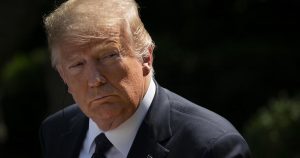The spread of coronavirus across California could be cut at least in half with a modest increase in the number of people wearing masks, one of the state’s top public health experts said Tuesday.
“If we had 80% compliance with masking, we could reduce transmission somewhere between 50% to 60%, which is tremendous,” said Dr. Mark Ghaly, secretary of the California Health and Human Services Agency. “That’s exactly what we need to see the case numbers come down.”
The exact number of Californians wearing masks in public is unknown. But recent national polls have found roughly 70% of Americans say they wear masks when they go out.
Ghaly’s remarks come as an increasing number of local cities and counties in California are passing ordinances to fine people who refuse to wear masks in public $100 or more. On Tuesday, the Contra Costa County Board of Supervisors voted unanimously to give city and county officials the ability to cite people who do not follow public health orders, such as wearing masks in indoor public spaces, or the ban on hosting large gatherings.
“We’re not doing it to make money, we’re not doing this to control people,” said Supervisor Diane Burgis. “We’re trying to get control over this disease and get our economy back. We need people to cooperate, to wear their masks. … We need all municipalities to come together so we can tackle this and move on.”
The fines would be as small as $100 for individuals’ first violations, increasing to $200 for a second violation and $500 for each additional violation afterward. For businesses, the fine for first infractions would be $250, then $500 for a second violation and $1,000 for violations after that.
Napa and Marin counties have passed similar rules. The cities of Monterey and Salinas have implemented a $100 fine for mask violations. And in Southern California, cities Glendale, Costa Mesa, Santa Monica and Irvine also have passed similar rules over the past month.
So far, Gov. Gavin Newsom has resisted issuing a statewide set of fines for failure to wear masks.
“We’ve largely left that to the local level,” Ghaly said Tuesday during a news conference. “We’ve seen more and more local jurisdictions consider fines for lack of compliance.”
Ghaly noted that Newsom has threatened to withhold some of $2.5 billion in grants to cities and counties for coronavirus aid if they refuse to follow state orders. Newsom issued a statewide mask order on June 18.
But convincing local law enforcement officials to enforce the rules is uneven. A day after Newsom issued his mask order, Sacramento County Sheriff Scott Jones issued a statement saying he wouldn’t be enforcing it because of the “minor nature of the offense” and the “potential for negative outcomes.”
Some health officials have said that not wearing a mask in public is akin to driving drunk or not stopping at a stop sign. They note that not only does a mask protect the person wearing it from airborne virus particles, but it also protects others from catching the disease when infected people cough, sneeze or breathe heavily near them — particularly because many people don’t even know they are infected.
“We’re trying to get people to wear masks because 60% of people on any given day with this infection are asymptomatic and are fully capable of spreading it,” said Dr. George Rutherford, an epidemiologist at UC San Francisco. “Without being able to put a big ‘C’ on their forehead to know who is infected and who isn’t, we basically do the next best thing, which is to assume everyone is infected and try to put a mask on them.”
A study done last month by Goldman Sachs found that if the rate of mask-wearing in the U.S. increased just 15% to 85%, it could would cut daily growth rate of infections from 1.6% to .6% — enough to prevent the need to bring back stay-at-home orders that would otherwise reduce the naton’s gross domestic product by 5% or $1 trillion.
Clear messaging from national leaders and widespread mask wearing in countries in Asia and Southern Europe have dramatically reduced cases there, said Jan Hatzius, head of Goldman Sachs Research and the firm’s chief economist, in a recent interview.
“We find very consistently that face masks work in bringing down virus spread,” he said.
On Tuesday, California reported 9,397 cases of COVID-19 as a 7-day daily average, up 2.3% from the previous seven days. There was a daily average of 108 deaths the past week, up 19% from the prior week. The rising trend has prompted Newsom to roll back business openings and block students from returning to school in person next month.
At first, when the pandemic began, federal officials told people not to wear masks so that they could be saved for doctors and nurses as shortages loomed. But as more studies on the disease were completed, and factories produced more masks, the message changed. By April, federal officials recommended, but didn’t require, masks. America and about half the states still have no mask mandate.
President Trump has refused to wear a mask in public until recently, although in recent days he has urged the public to do so.
Two weeks ago, Robert Redfield, the head of the U.S. Centers for Disease Control, said universal mask wearing could mean the beginning of the end of the pandemic in as soon as a month.
“If we could get everybody to wear a mask right now, I think in four, six, eight weeks we could bring this epidemic under control,” Redfield said at an online conference sponsored by the Journal of the American Medical Association.
In most countries masks aren’t controversial, particularly places like Asia and Europe where case numbers have plummeted in recent weeks. A poll released Monday found that 74% of Californians say people in their area should always wear a mask in public to prevent COVID-19 spread. But the survey, by the non-partisan Public Policy Institute of California, found political differences: 87% of liberals said people always should wear a mask, while a smaller, 65% of conservatives said that.
“It’s controversial because the president has made it controversial,” said Rutherford. “Now that he’s talking about it, it might make some difference.”
Bay Area News Group reporter Annie Sciacca contributed to this story.



















